Up early, we’re on our way to Portland but need to get propane and stop at the Tillamook Forest Center on the journey. Propane was easy and we’re on our way down a twisty windy road in the Tillamook Forest - only to stop at the Tillamook Forest Center where we’ll learn about the ‘Tillamook Burn.’ The ‘Burn’ was a series of fires which coincidently happened every 6 years in the 30’s to the 50’s and burned most of what is now called the Tillamook Forest, the largest forest in Oregon. 4 fires, 355,000 acres, 554 sq miles. Huge.
The first fire began when a logging company crew decided to move one last log after they had been told to quit because of the forest fire danger. They chained that last log up and began to drag it over the ground. As it was pulled over a dry log on the forest floor, the friction caused by the dragging sparked the fire. 311,000 acres burned, smoke filled the valleys and ash from the fire reached the decks of ships 500 miles out at sea. The remaining 3 fires were not so devastating as this one but it wiped out the forest by the 1950’s. This land was now called the Tillamook Burn, not the Tillamook Forest.
Meanwhile, much of the wood that had fallen and had not completely burned was harvested, the state took over most of this land, which had been owned by logging companies who abandoned their land with unpaid taxes and people decided to replenish the forest.
In droves they turned out to replant the forest, volunteers with trowels, shovels and small Douglas firs which they carried in pouches, planes which dropped seeds onto steeply sloped land and other hard to reach places and work crews with heavy equipment. Girl Scouts, Boy Scouts, prisoners, the CCC, school groups bussed in and average citizens banding together in towns. Today you can drive through mile after mile of lush Tillamook Forest, the Tillamook Burn is long gone.
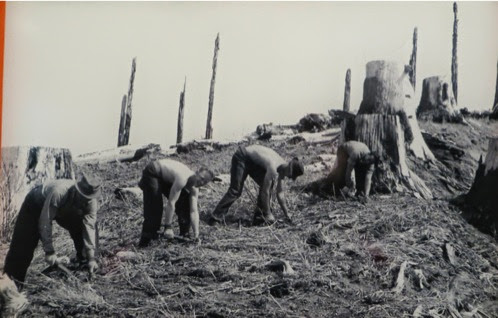
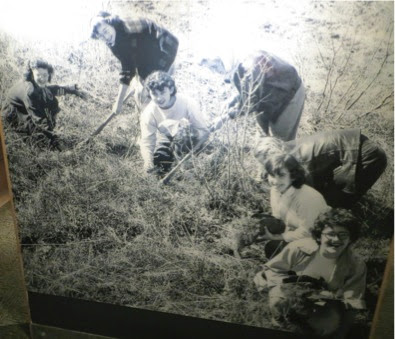
Then there’s the law of unintended consequences. With all the best intentions, they planted all the same tree in all the same years. Now these trees are all the same height and there is not as much understory of younger trees. Little by little, the State is planting more to ensure that the forest continues.
The Tillamook Forest Center is a green building, using rain water in the toilets and to water the bushes out front. There are marvelous displays inside telling about the forest, early peoples, settlers, the coming of the railroads, logging, the Tillamook Burn and replenishing and many other things, both historical and botanical.
One story that particularly struck me was the story of the Smith family. There were settlers in what is now the Tillamook Forest and had a particularly harsh winter where they thought they might starve. They decided to build a boat to carry them into Tillamook through the rapids of the local river (here’s a picture of the river that I took today.) Imagine cascading down this river in the middle of winter on a raft. They had a 640’ drop in 24 miles and rapids a good portion of the trip. (This is a picture of the rapids in the spring, not the cold, icy, snowy winter.)
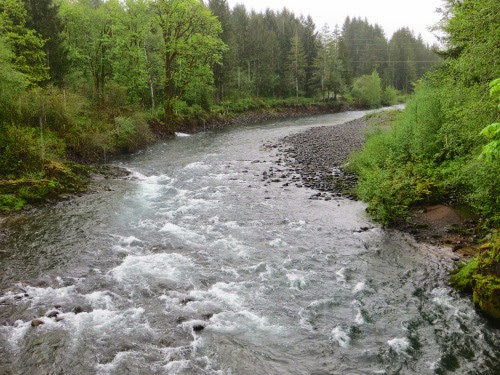
2 days of freezing temperatures, little food and running rapids and they reached town to winter. In the spring they returned to find their cows had died of starvation. They built a 4-room home and farmed for years.
We attended a Ranger talk on the fire lookouts and those who manned (or womanned them) and climbed to the top of the tower. They wanted people who could be alone for days at a time, were self-sufficient and could do the job for the summer. Here is the first type of lookout. Imagine sitting at the top of this pole watching for fires for hours at a time.
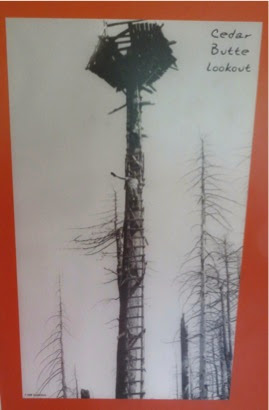
Then they developed cushier ones. They had a wood stove in the lookout tower which they had to carry wood up to, a 40-gallon water jug which they had to carry filled up to the tower, no refrigeration so they ate mostly canned goods, a bucket in which they could wash their clothes.
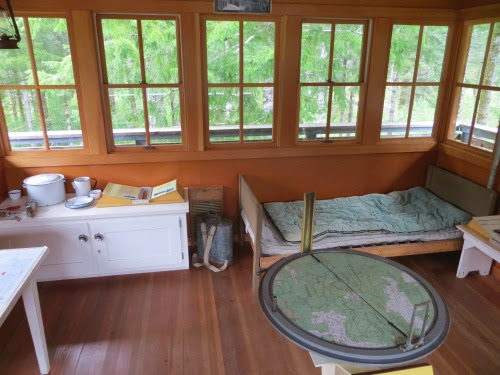
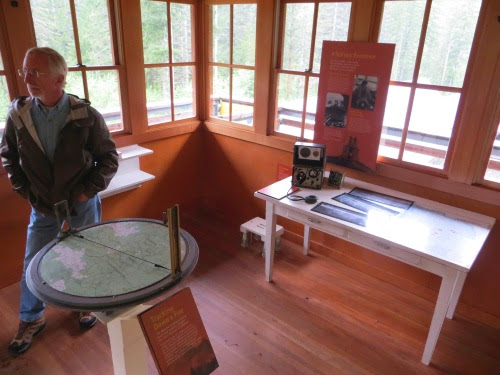
They had to learn how to use the instruments for locating fires once they spotted them and had to watch for fires 10 minutes an hour. All the comforts. Who wouldn’t want this job? The first guy who hired a woman for the job was laughed at by his fellows. Then they found out how well women could do this job and women were in demand. Here’s a lookout calling in her report on the radio she had in her lookout. (Love those saddle shoes - they look just like the ones I had.) (But I never showed that much leg.)
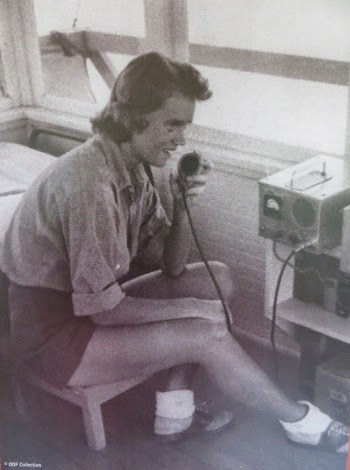
And, many did. One woman did it all summer with her grandchild.
Beautiful suspension bridge out to the trails behind the Center in the Forest. And, tables to eat lunch - on a sunny day.

Of course it rained the entire time we were in the Forest Center and when we got back out on the road. But it slowly changed to light on and off rain as we approached Portland. A hot, skip and a jump and we were in our campground near the Columbia River and settled in.

No comments:
Post a Comment